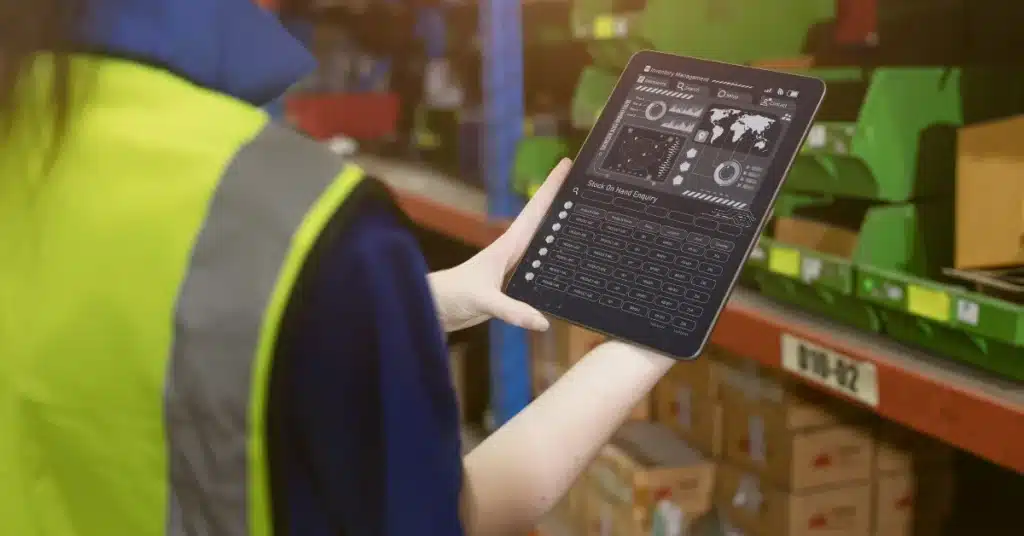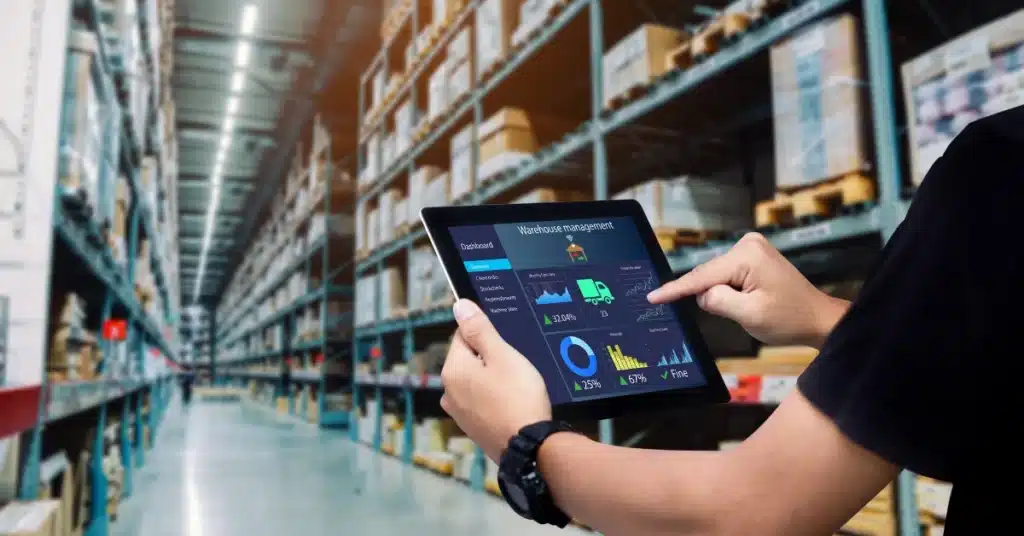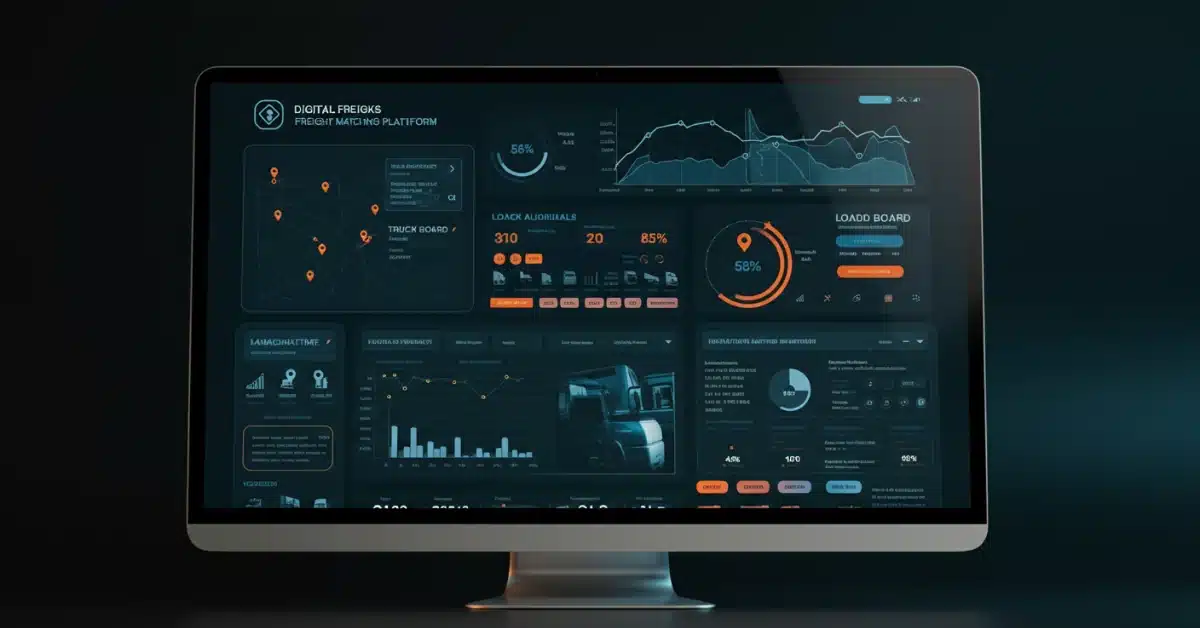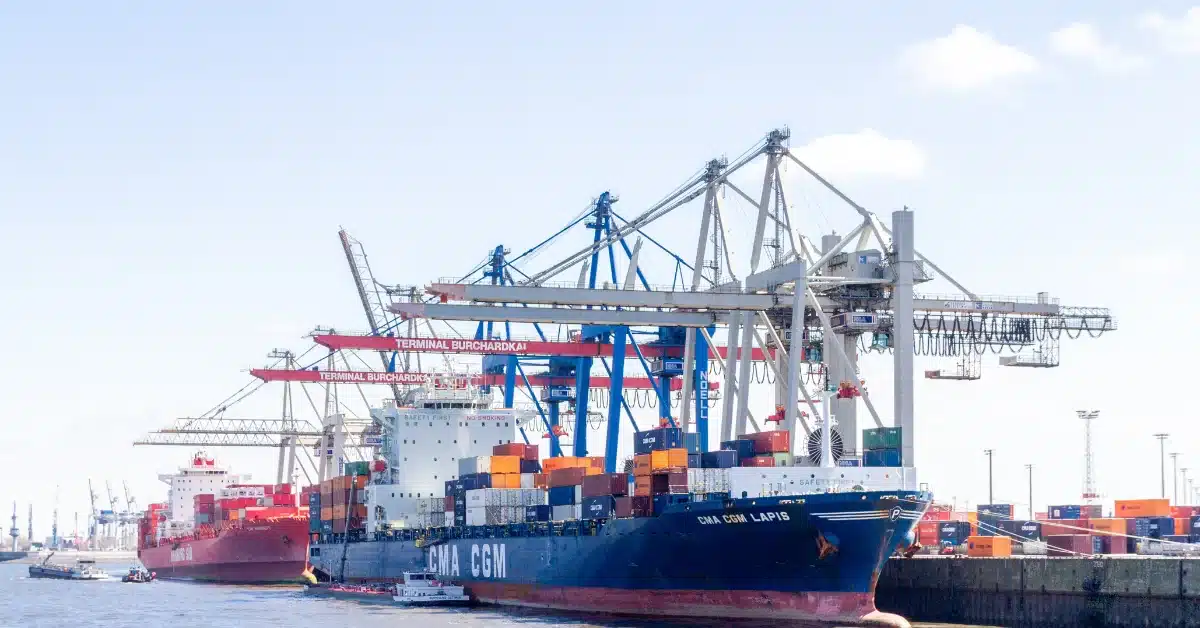Digital Freight Matching Explained: Revolutionizing Load Matching and Freight Brokerage
Table of Contents
- Digital Freight Matching Explained: Revolutionizing Load Matching and Freight Brokerage
- I. Understanding Digital Freight Matching (DFM)
- II. Key Components of Digital Freight Matching Platforms
- III. Benefits of Digital Freight Matching
- IV. Challenges and Considerations
- V. Future Trends in Digital Freight Matching
- Conclusion
- FAQ Section:
- 1. What is Digital Freight Matching?
- 2. How does Digital Freight Matching work?
- 3. What are the benefits of using a digital freight platform?
- 4. What challenges might businesses face when implementing digital freight matching?
- 5. Can digital freight matching platforms be integrated with existing systems?
- 6. How secure is data on digital freight matching platforms?
- 7.What is the future of digital freight matching in the logistics industry?
The logistics and transportation industry is undergoing a transformation with the rise of digital freight matching platforms. These innovative tools are revolutionizing how shippers and carriers connect, making freight brokerage more efficient, transparent, and cost-effective. Digital freight matching uses technology to match freight loads with available carriers in real-time, saving time, reducing costs, and optimizing logistics operations. In this article, we’ll explore how digital freight matching works, its benefits, challenges, and the future trends in this rapidly evolving space.
I. Understanding Digital Freight Matching (DFM)
What is Digital Freight Matching?
Digital freight matching (DFM) is a technology-driven process that connects shippers with available carriers using digital platforms. These platforms use sophisticated algorithms to match freight loads with the most suitable carriers based on factors such as location, capacity, and delivery requirements. DFM eliminates the need for manual coordination, speeding up the process and improving overall efficiency.
The Evolution of Freight Matching
Before the advent of digital freight platforms, shippers had to rely on traditional methods like phone calls, emails, and fax to find carriers. This was time-consuming, inefficient, and often resulted in missed opportunities. With digital platforms, these connections happen almost instantly, transforming the freight matching process into a seamless and automated operation.
II. Key Components of Digital Freight Matching Platforms
Load Matching Algorithms
At the heart of digital freight matching are load matching algorithms. These algorithms analyze multiple factors, such as shipment size, destination, and carrier capabilities, to make the best matches between available freight and carriers. The algorithms are designed to maximize efficiency, minimize empty miles, and reduce the overall transportation cost.
For example, platforms like Freightos and DAT Solutions leverage these algorithms to match shipments with the right carriers, ensuring faster, more efficient delivery.
Real-Time Data Integration
Digital freight platforms integrate real-time data to provide up-to-the-minute updates on shipments, routes, and availability. This means that both shippers and carriers have access to live tracking, which helps reduce uncertainty and enhances transparency in the process.
Real-time data not only increases visibility but also allows for dynamic adjustments during the transport process. For instance, if there’s a delay or change in routing, both the shipper and carrier can adjust plans accordingly without significant disruptions.
User Interfaces and Experience
The success of a digital freight matching platform depends largely on the user interface (UI). Platforms must be intuitive and user-friendly to ensure that even non-technical users can navigate easily. Whether through web applications or mobile apps, the user experience is critical in streamlining the logistics process. The easier it is to book a load or find a carrier, the more likely it is that both shippers and carriers will continue to use the platform.

III. Benefits of Digital Freight Matching
Increased Efficiency and Speed
One of the biggest advantages of digital freight matching is increased efficiency. With traditional methods, it could take days to find a carrier for a load. Digital platforms drastically reduce this time, often matching shipments with carriers in just minutes. This not only speeds up the booking process but also ensures that the carriers spend less time searching for loads, improving their productivity.
Cost Reduction
Digital freight platforms also help reduce costs by optimizing routes and minimizing the need for empty miles. In traditional freight brokerage, empty miles (miles driven by a carrier without cargo) were a major cost burden. Digital platforms eliminate much of this inefficiency by better matching available loads to nearby carriers, ensuring that carriers spend less time and money on non-profitable travel.
Enhanced Transparency
Real-time tracking and automated updates are features that set digital freight matching apart from traditional brokerage. Both the shipper and the carrier can monitor the progress of the shipment in real-time, which enhances transparency. This transparency helps build trust between all parties and improves communication throughout the process.
IV. Challenges and Considerations
Data Security
While digital platforms offer numerous benefits, they also present challenges, particularly around data security. The vast amounts of sensitive data exchanged between shippers, carriers, and third-party providers need to be securely protected. As the logistics industry embraces more digital solutions, robust cybersecurity measures must be implemented to prevent breaches and safeguard the data.
Integration with Existing Systems
Many companies already use legacy systems for managing their logistics and freight operations. Integrating digital freight platforms with these systems can be a challenge. Some platforms may offer APIs for integration, but others may require more manual work to sync up with older technology. Ensuring a seamless integration process is essential for smooth operations.
Market Adoption
While digital freight matching is growing rapidly, the pace of adoption varies across regions and industries. Smaller businesses or those in less digitally advanced regions may be slower to adopt these technologies. Encouraging widespread adoption will require education and demonstrations of the long-term benefits of digital freight matching.

V. Future Trends in Digital Freight Matching
AI and Machine Learning Integration
As digital freight platforms continue to evolve, many are incorporating artificial intelligence (AI) and machine learning (ML) to improve load matching accuracy and efficiency. AI can analyze vast amounts of data to predict demand, optimize routes, and even anticipate potential delays. Machine learning models can continuously improve their predictions over time, making the platforms smarter and more effective.
Global Expansion of Digital Freight Matching
As the digital freight matching industry matures, we are seeing a growing global expansion. Emerging markets are starting to recognize the benefits of DFM, and platforms are extending their reach to serve international shippers and carriers. This expansion will lead to more streamlined global supply chains, allowing for faster cross-border shipments and improved international logistics.
Sustainability and Eco-Friendly Practices
With growing concerns about environmental impact, digital freight matching platforms are also focusing on sustainability. By optimizing routes and reducing empty miles, these platforms are helping to decrease fuel consumption and greenhouse gas emissions. Some platforms are even working on integrating sustainability metrics, helping carriers and shippers make eco-friendly choices in their logistics operations.
Conclusion
Digital freight matching platforms are revolutionizing the logistics industry by improving efficiency, reducing costs, and enhancing transparency. These platforms allow shippers and carriers to connect in real-time, streamlining the transportation process and ensuring faster, more reliable deliveries. While there are challenges to overcome, such as data security and market adoption, the future of digital freight matching looks promising, with innovations in AI, machine learning, and sustainability on the horizon. As the logistics industry continues to embrace these technologies, the benefits of digital freight matching will only grow.
FAQ Section:
1. What is Digital Freight Matching?
Digital Freight Matching (DFM) is a technology-driven system that connects shippers with carriers using online platforms to match freight loads with available transportation.
2. How does Digital Freight Matching work?
DFM uses algorithms to match available loads with suitable carriers based on factors like location, size, and capacity. These platforms also offer real-time tracking to enhance visibility.
3. What are the benefits of using a digital freight platform?
Benefits include increased efficiency, reduced costs, enhanced transparency, and improved communication between shippers and carriers.
4. What challenges might businesses face when implementing digital freight matching?
Some challenges include data security concerns, integration with legacy systems, and the pace of market adoption.
5. Can digital freight matching platforms be integrated with existing systems?
Yes, many digital freight platforms offer integration capabilities, although it may require additional technical support for older systems.
6. How secure is data on digital freight matching platforms?
Digital freight platforms implement robust security measures to protect sensitive data, but businesses must ensure they choose platforms with strong cybersecurity protocols.
7.What is the future of digital freight matching in the logistics industry?
The future of DFM involves greater AI integration, global expansion, and sustainability efforts to reduce environmental impact in the transportation sector.





